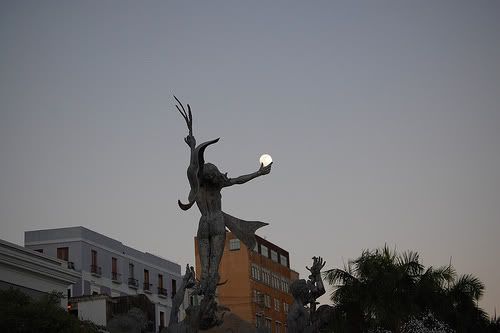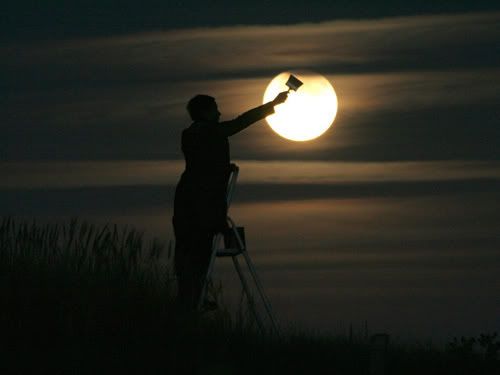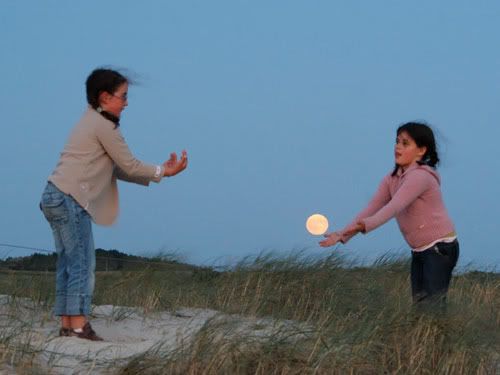So, finally I have collected enough new Moon optical illusions to justify posting them as a collection. Individually posting each one, wouldn't make sense any more. Agree? Even though the idea isn't something we haven't already seen before (through relative sizes category), still each photo uses the Moon as an illusion in a slightly different manner. If my memory serves me correctly, the first illusion of this kind that made me "wooow" was The Man holding a Sun. Afterwards, they just kept coming. While I was writing this article, I came to a conclusion how I subconsciously choose the illusions I post. If my method interests you, just keep reading - First and most important ingredient is the illusion itself. If the optical illusion isn't obvious enough, no matter how cool the photo is, I won't publish it. After all, this website is entirely dedicated to illusions. Now if the illusion itself is good enough, I look at the picture (or photo) as a whole. It has to be visually keen, or plainly - look nice. In the end, I try to choose among illusions that are original enough, but weren't already posted in every corner of the internet. Sometimes the illusion itself is so awesome or new that it (rightfully) overrides my other criteria, and sometimes just the artistic touch or the coolness of the photo override the first (illusion) criteria. Here, now you have it... Please share your thoughts. Advices are always welcome.








Sunday, August 17, 2008
Art with our Moon
Saturday, August 9, 2008
Japan’s Spectacular Floating Airports
What happen when there’s no suitable land to build a new major airport or there are protest about the new construction without hesitation due to noise pollution or other environmental implications?
If you travel to Japan in the near future, you may witness a solution to these problems in the form of floation airports. At present there are four such constructions in Japan (there are also examples in Hong Kong and Macau). Each built on its own artificial island offshore and each backed by the community it serves. The first of these incredible engineering wonders to be built and the first of its kind in the world was Kansai International Airport in Osaka Bay. Just to build the 4 kilometres long island called for 21 million cubic metres of landfill plus the assistance of 80 ships, then there was the small matter of connecting the airport to the mainland by way of a 3 kilometres bridge. In total the project has so far cost around $20 billion, but has already saved some expense by surviving both an earthquake and a typhoon in the last 15 years, in addition being open 24 hours a day due to its location.
Here are Japan’s four floating airports :




















